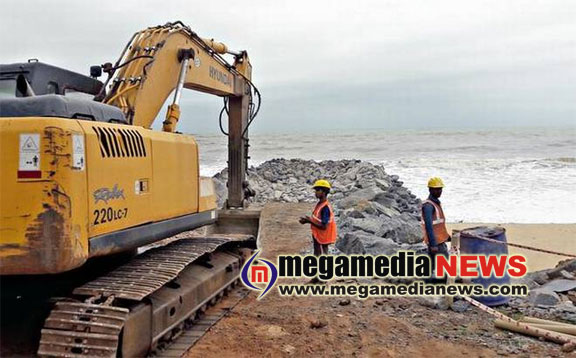Protecting a 2.5-km spectacular shoreline at Maravanthe
10:29 AM, Monday, May 28th, 2018 Udupi: Those who were worried about the constant threat of National Highway 66 passing between the Arabian Sea and the Souparnika at Maravanthe getting eroded by massive waves, have got a reason to relax as the highway as well as the spectacular beauty is likely to remain intact.
Udupi: Those who were worried about the constant threat of National Highway 66 passing between the Arabian Sea and the Souparnika at Maravanthe getting eroded by massive waves, have got a reason to relax as the highway as well as the spectacular beauty is likely to remain intact.
The Asian Development Bank-funded Maravanthe Shoreline Protection and Management Project through construction of groynes and sand distribution through department of ports and inland water transport promises to protect the 2.5-km shoreline between Trasi and Maravanthe from the onslaught of waves.
At the same time, people in the region believe that a massive rock underneath the Maharaja Varahaswami Temple between the Sea and the River would not allow the erosion of thin strip of land.
Located in Udupi district, the Maravanthe Shoreline has been unique attracting thousands of tourists as it passes in between the Sea and the River.
As a part of four-laning National Highway 66, the National Highways Authority of India (NHAI) has built a four-lane road on the stretch, partially reclaiming portion of the riverbank through a bridge.
B. Gopal Naik, Superintending Engineer of PWD’s ADB-assisted projects, Mangaluru, told The Hindu that seashore conservation was necessary to protect the NH. While the government had invited tenders for the project at an estimated cost of ₹ 98 crore, a joint venture of Comcore-RDS Projects-Yojaka quoted the lowest, ₹ 86 crore, to bag the project.
The project involves construction of 24 groynes — 14 straight and 10 “T” shaped —along the 2.5-km beach-front between the southern breakwater of Maravanthe fishing harbour and Trasi with each groyne jutting into the sea for a distance of about 110 metres.
These groynes are expected to reduce the impact of waves and facilitate proper distribution of sand thereby preventing further erosion of the shoreline, Mr. Naik said. [A groyne is a low sturdy wall built into the sea from a beach to check erosion and drifting.]
While straight groynes are under construction, formation of “T” shape for 10 groynes would commence after the Monsoons, as the department has decided to go for 5 tonne tetrapod instead of the earlier 2.5 tonne ones.
This is to withstand increasing height of the sea-level due to global warming, Mr. Naik said.
Though the contractor is given time till 2020 to complete the project, the department is hopeful of achieving the target by May 2019, the Superintending Engineer said.
Simillar Posts
Warning: count(): Parameter must be an array or an object that implements Countable in /home/megamcaq/public_html/wp-content/plugins/post-plugin-library/common_functions.php on line 357
- None Found
Leave a Reply
© Copyright 2008 www.megamedianews.com All Rights Reserved. Privacy Policy








 Posted in
Posted in  Tags:
Tags: 




